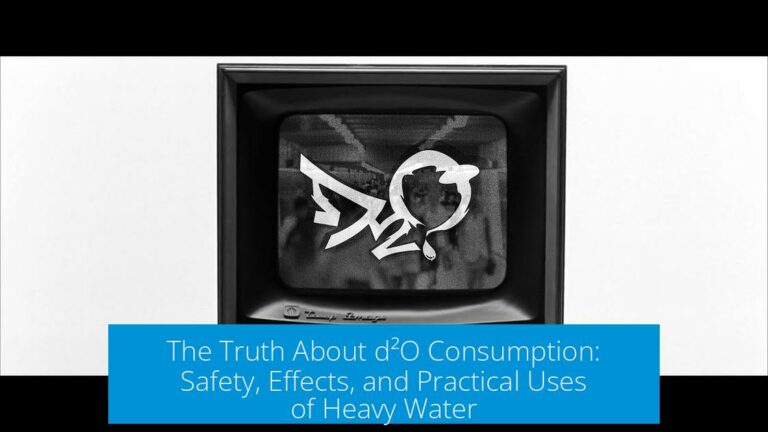Is Mixing Bleach and Vinegar Dangerous and Ineffective?

Mixing bleach and vinegar produces chlorine gas, which is harmful to inhale, making this combination dangerous. Additionally, using these chemicals together in diluted form is unlikely to clean effectively.
Production of Chlorine Gas and Its Risks

Bleach contains sodium hypochlorite, a strong oxidizer. When vinegar, an acetic acid solution, mixes with bleach, a chemical reaction releases chlorine gas. Chlorine gas irritates the respiratory system and can cause serious health problems if inhaled. The concentration matters; a very diluted mixture (e.g., 2 tablespoons of each in a gallon of water) reduces risk but does not eliminate it.
Effectiveness as a Disinfectant

At low concentrations, such mixtures do not disinfect effectively. Effective disinfection with bleach typically requires solutions diluted about 1:100 with water, allowing sufficient contact time, usually around two hours to kill bacteria and mold. The diluted bleach-vinegar mixtures often used may fail to achieve this level of sanitation.
Conflicting Claims: Chemical Reactions Clarified

- Some sources claim hypochlorite reacts to form peracetic acid, a disinfectant, when mixed with vinegar.
- This reaction is complex and less predictable outside controlled conditions.
- Equal parts bleach and vinegar may produce minimal chlorine gas and other byproducts like sodium chloride but pose health risks.
Personal Experiences and Observations
Some users report successful cleaning results mixing bleach, vinegar, and dish soap, particularly for odor elimination and stain removal on carpets. Dish soap helps break down organic matter, bleach disinfects, and vinegar may help with certain stains. However, these mixtures can emit chlorine-like odors, indicating possible chlorine gas presence, which is hazardous.

Key Takeaways
- Mixing bleach and vinegar releases chlorine gas, a toxic substance.
- Diluted mixtures reduce risk but remain unsafe and often ineffective.
- Effective bleach disinfection requires proper dilution and contact time.
- Claims about safe chemical alternatives like peracetic acid formation are scientifically complex and uncertain.
- Personal anecdotal successes do not guarantee safety or consistent effectiveness.
Is Mixing Bleach and Vinegar a Cleaning Miracle or a Hazardous Myth?

To start, mixing bleach and vinegar is generally a very bad idea due to the production of chlorine gas, which is toxic and harmful to inhale. But wait, before you picture a chemical disaster in your kitchen, there are some nuances to this story. Someone you know might swear by their bleach and vinegar mix, boasting about pristine surfaces and fresh scents. You, understandably, raise an eyebrow about safety and effectiveness. Who’s right?
Let’s dive into what really happens when you mix these two household staples, what science says about the safety, how effective such a combo truly is, and when — if ever — it might be okay to experiment with this potent potion.

The Nasty Truth About Chlorine Gas
Bleach contains sodium hypochlorite (NaOCl). Vinegar holds acetic acid (CH3COOH). When combined, a chemical reaction can release chlorine gas (Cl2). This isn’t just some harmless kitchen smell — chlorine gas is highly toxic and can cause coughing, chest pain, and breathing difficulties.
That said, how much chlorine gas is made depends on the concentrations. For instance, mixing just two tablespoons of bleach and two tablespoons of vinegar in a whole gallon of water results in a very dilute solution. This low concentration minimizes, but does not eliminate, the risk of chlorine gas formation. So, yes — mixing is still very risky, but if it occurs at super-diluted levels, the danger may be lowered.
Our takeaway? It’s not safe practice, especially in enclosed spaces. Why intentionally invite a respiratory hazard into your home?
Does Dilution Solve the Cleaning Puzzle?
If dilution reduces danger, does it also reduce cleaning power? Unfortunately, yes. At such low concentrations, the disinfectant punch of this mixture is likely very weak.
Consider this: When disinfecting recycled water bottles at home, experts recommend diluting bleach about 100-fold with water — and even then, it needs to stand for a couple of hours to kill bacteria and mold. The bleach plus vinegar mix, used at similarly low levels, probably won’t match that effectiveness. Plus, the acidity of vinegar can actually degrade bleach, making it less potent.
In other words, your bleach-and-vinegar combo might leave behind more germs than it kills.
A Confusing Chemist’s Debate on Peracetic Acid
Interestingly, some claim that mixing bleach and vinegar doesn’t always create chlorine gas but instead forms peracetic acid. This compound, known as the Stevens-Chapman reagent, is a robust oxidizer and deodorizer. It reportedly helps eliminate odors and even oxidizes some alcohols.
The claim goes: mix equal parts bleach and vinegar (a bit more vinegar if you like), and you get peracetic acid—safe and effective, no chlorine gas involved. The chlorine atoms end up as ordinary salt (NaCl). Sounds neat, right?
However, this explanation conflicts with the standard understanding of chemistry where chlorine gas forms. Without precise lab conditions, it’s unpredictable. Most home mixing scenarios won’t reliably produce peracetic acid safely.
Anecdotal Cleaning Wins and Warnings
To add a personal touch, one dog owner runs out of carpet cleaner and concocts a mixture: one tablespoon of bleach, one tablespoon of vinegar, some dish soap, all diluted in a gallon of water. They report success—carpet stains vanish and bad odors disappear. The “pool-like” chlorine smell lingers, suggesting some chlorine gas was produced.
Dish soap helps break up proteins in pet waste. Vinegar aims at stains. Bleach disinfects. The plan sounds clever. Yet, the chlorine gas hint means this DIY hack trades some safety for effectiveness.
Honestly, mixing chemicals without full knowledge can be reckless. If you ever get a whiff of that sharp chlorine smell, open windows and leave the area immediately.
What’s the Bottom Line?
- Mixing bleach and vinegar does produce chlorine gas, which is hazardous to breathe. Even diluted mixes don’t guarantee safety.
- Low concentrations might reduce risk but also weaken any disinfecting effect. So, if it’s weak cleaning power you want, this mix might deliver. If you want genuine germs eradication, better to stick to approved methods.
- Some argue peracetic acid forms instead of chlorine gas, but this is chemically contentious and unreliable in casual use.
- Anecdotal success stories exist, but don’t ignore possible health risks, especially respiratory issues.
Recommendations for Safer and Smarter Cleaning
If your friend swears by the bleach and vinegar mix, gently suggest safer alternatives:
- Use bleach alone for disinfection, diluted properly (typically 1 part bleach to 50 or 100 parts water).
- Use vinegar alone for tackling mineral deposits and light stains—vinegar is great for that.
- Never mix the two directly.
- Ventilate well when using any harsh cleaners.
- For stains and odors, consider enzyme-based cleaners that break down organic matter without toxic risks.
Cleaning isn’t a place to experiment with chemical fireworks. Your nose and lungs will thank you for playing it safe.
Have You Ever Tried That Bleach and Vinegar Combo?
Curious if anyone else has tested this infamous mix? Did it work or backfire? Share your story—and next time, remember: Some mixtures sound clever but can turn your house into a chemistry lab gone wrong. Stick with proven formulas and stay safe.
After all, cleaning should leave your home spotless, not your lungs gasping!
Is mixing bleach and vinegar safe to do at home?
Mixing bleach and vinegar produces chlorine gas, which can be harmful to breathe. Even in diluted amounts, it is generally not safe. It’s best to avoid combining these two chemicals.
Does a bleach and vinegar mix disinfect effectively?
The mix at low concentrations is unlikely to be effective. Proper bleach dilution alone can kill bacteria and mold, but combining it with vinegar reduces its disinfecting power.
Can mixing bleach and vinegar ever be safe or useful?
Some say mixing produces compounds like peracetic acid, useful for odors. However, this is not well proven and can still release chlorine gas. The safety and benefits remain unclear.
Why do some people claim the bleach and vinegar mix cleans well?
Some users report that mixing bleach, vinegar, and soap cleans stains and odors. Yet, this may create chlorine gas and is risky. Effectiveness is not guaranteed.
What happens chemically when bleach and vinegar are combined?
Bleach contains hypochlorite, vinegar is acetic acid. Their reaction can release chlorine gas, a toxic substance. Some argue the chlorine turns into salt, but risks remain.





Leave a Comment